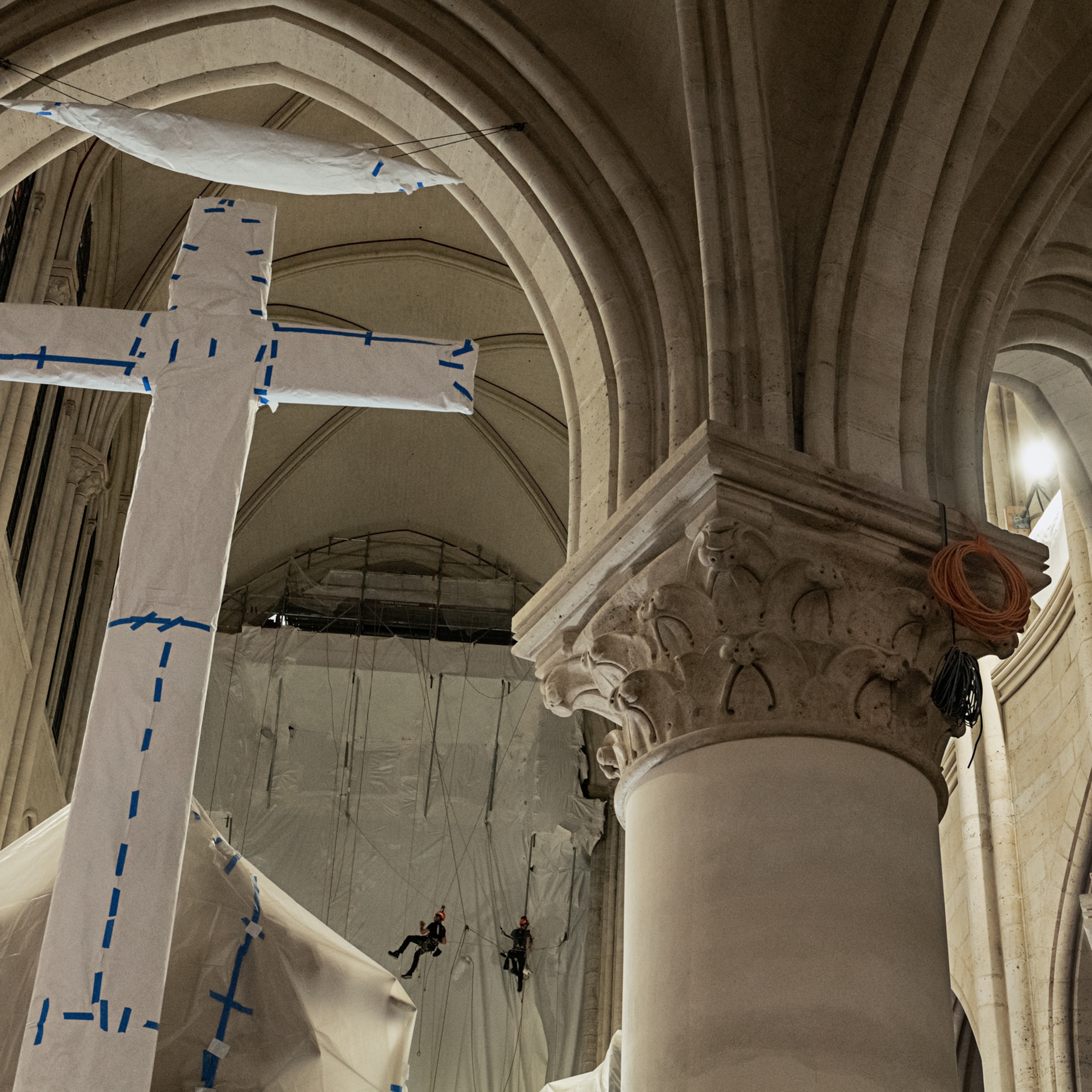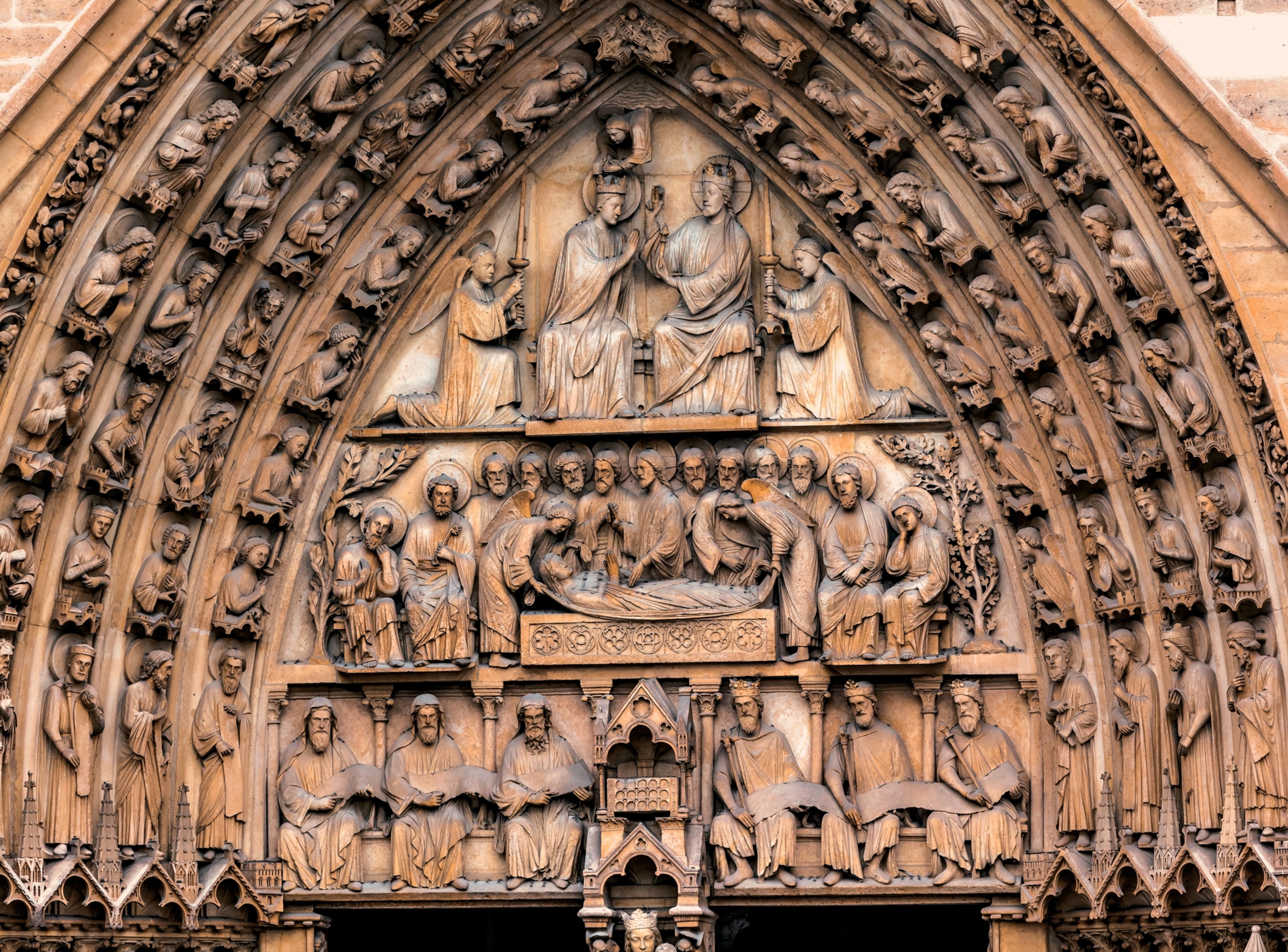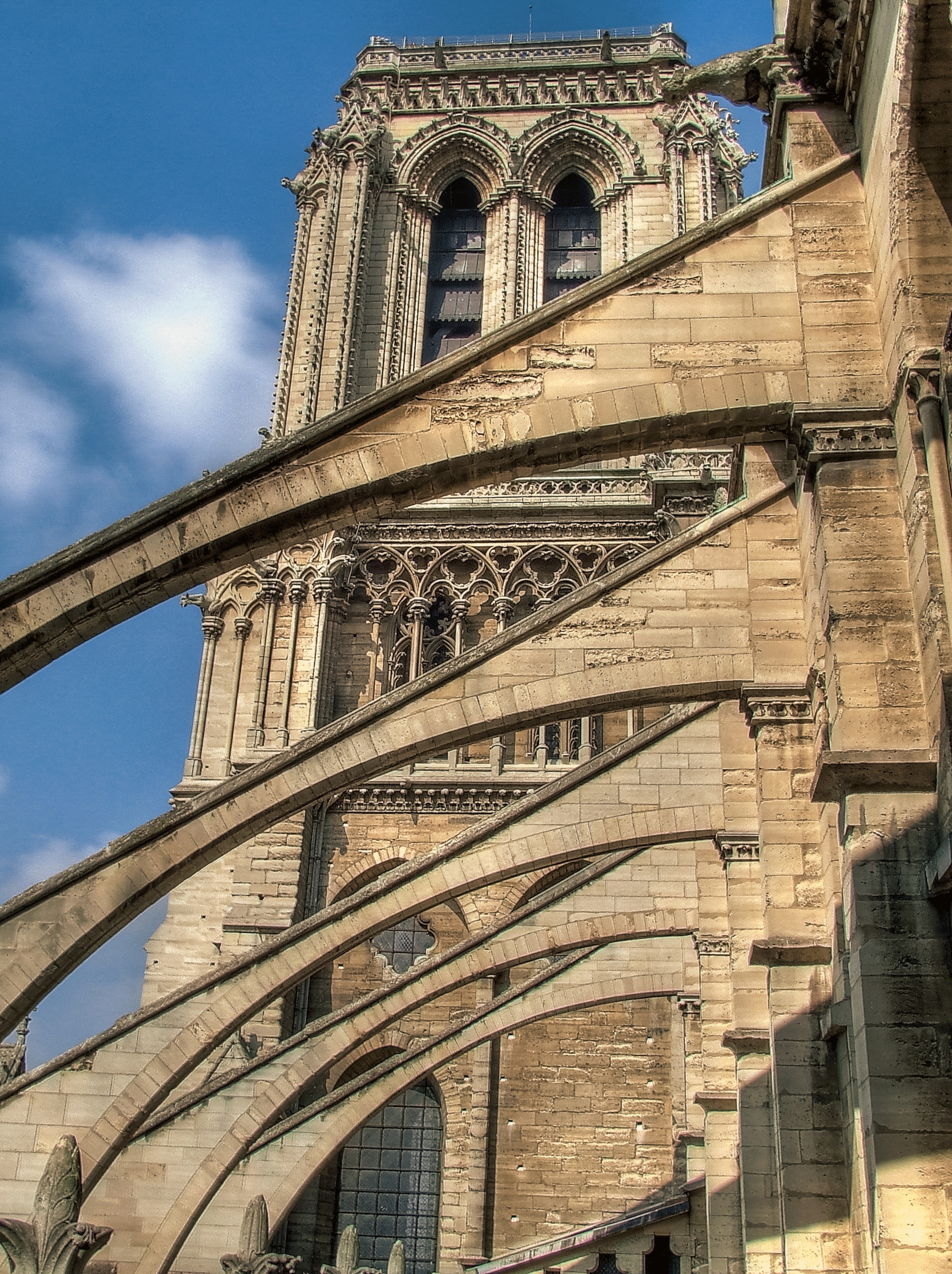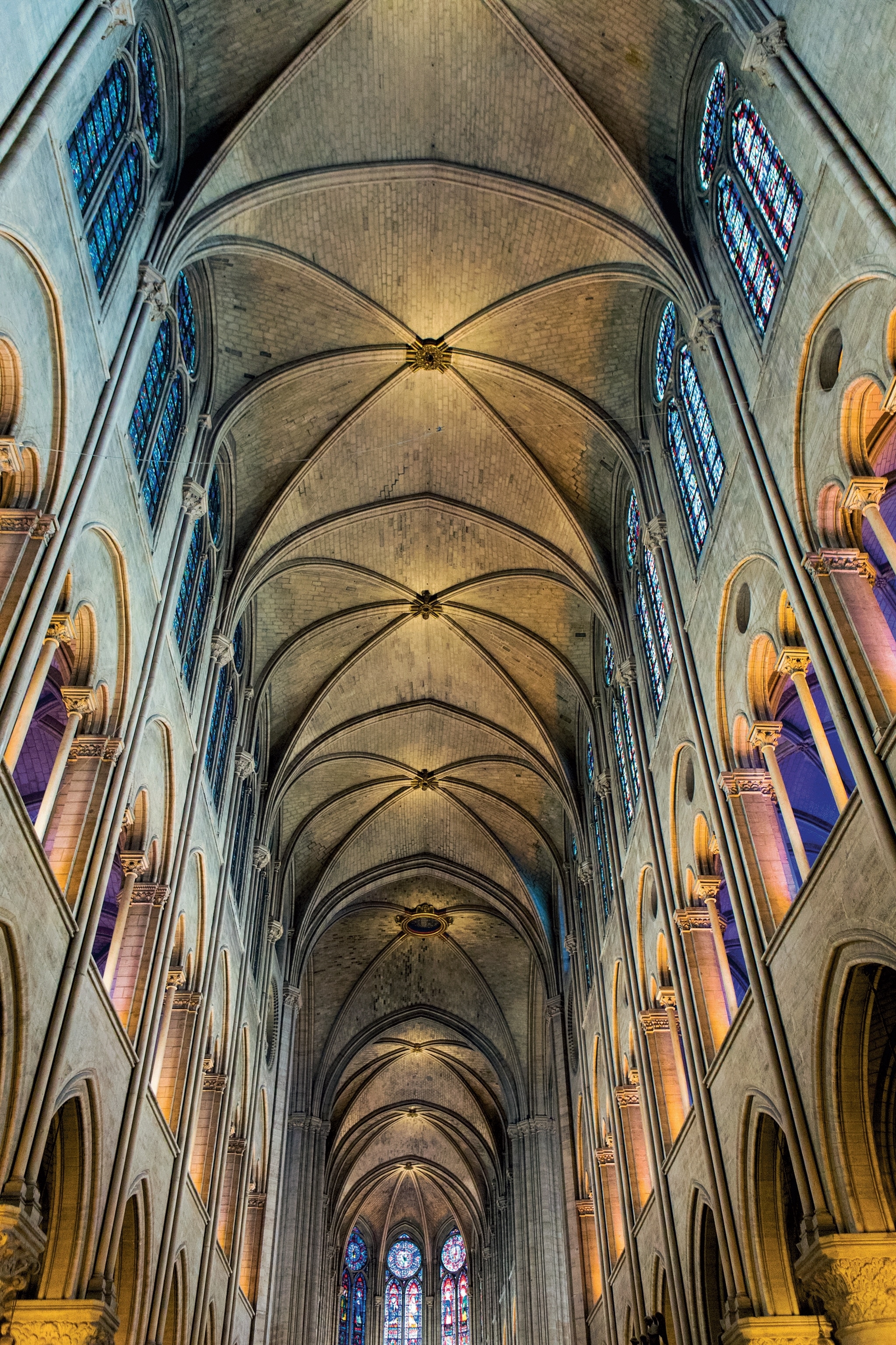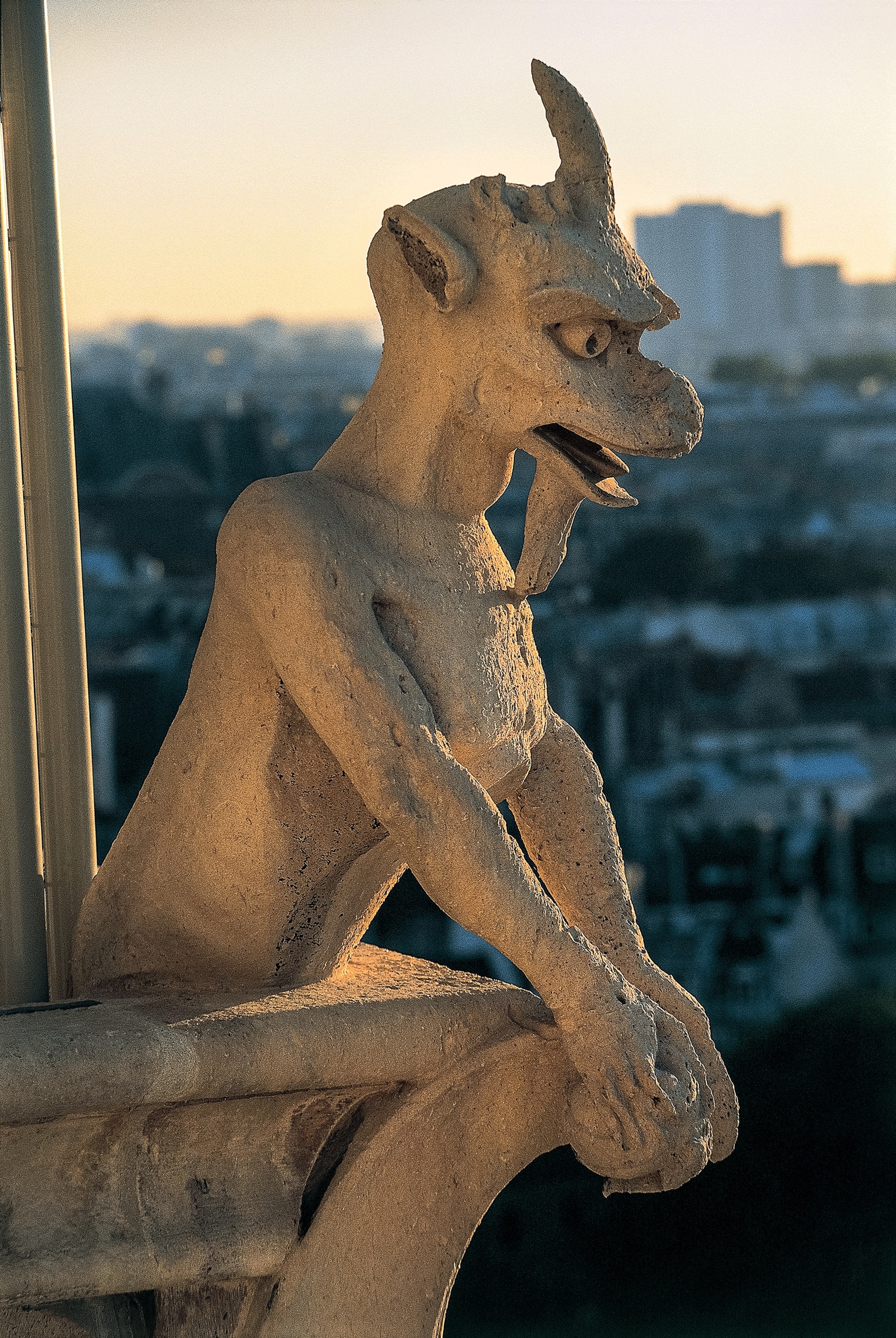
An 800-year history of Paris's Notre Dame Cathedral
This resilient, gravity-defying Gothic cathedral survived centuries of France’s turbulent past. It emerged in the 19th century from near ruin, thanks to a massive restoration project.
Notre Dame de Paris is perhaps France’s most famous landmark: standing tall at the heart of the city for centuries, accepting the people’s reverance one day, then facing their rejection on another. Its history was forever changed Monday when a massive fire broke out causing the medieval structure's spire to collapse.
The cathedral, which houses the crown of thorns relic, sits on the Île de la Cité, an island in the center of the Seine. The town was well-placed to control the passage of goods along the waterway and grew wealthy. By the 10th century, Paris was the center of an emerging new European power.

Trade was key to the city’s burgeoning fortunes, but Paris was gaining a reputation as a spiritual center as well. A saintly cult had been developing around its local martyr, St. Denis. According to tradition, Denis was beheaded on the hill of Montmartre (“martyrs’ mount”) in the mid- to late-third century A.D., after which he ran six or so miles while carrying his severed head. In a spot north of the city, alleged to be where he stopped running, a basilica was built in the 12th century to honor him.
One witness of the construction of the Basilica of Saint-Denis was the 12th-century Bishop of Paris, Maurice de Sully. He admired the work of the pioneering architects, who were building in the new Gothic style of soaring ceilings and abundant light. Sully decided to create a rival structure in the heart of Paris itself: a cathedral that would be the wonder of Christendom and dedicated to the Virgin Mary.
The times smiled on Sully’s project. This stage of the high Middle Ages was marked by an economic boom in Europe, especially in France. With the generous financial backing provided by the crown, Sully contracted an architect (whose identity is unknown) to design the new church in 1160. Its construction required demolishing various houses in the cramped medieval neighborhood and two existing churches on the Île de la Cité that had, in their own day, been built over an ancient pagan temple. The first stone was laid in June 1163, in a lavish ceremony attended by Pope Alexander III.
Building a Church
Building Notre Dame took nearly two centuries from start to finish. The cathedral became a lifelong project for Sully. Work on the sanctuary and nave began first. In 1182, under the reign of the new king, Philip II, the high altar was consecrated. Sully was able to celebrate the first Mass in the cathedral but would die in 1196, nearly 150 years before the main structures of the cathedral would be finished in the 1300s.
Timeline: Raised, Rejected, Restored

1163
The first stone of the cathedral is laid with Pope Alexander III in attendance.
1182
Bishop Maurice de Sully celebrates the first Mass after the high altar has been consecrated.
1240-1345
Incorporating Gothic elements, several different builders guide the cathedral to completion.
1789
French revolutionaries cause major damage to the building, especially the statuary.
1831
Publication of Victor Hugo’s The Hunchback of Notre Dame sparks a campaign to restore the cathedral.
1844
Viollet-le-Duc is appointed to lead a complete restoration of Notre Dame.
When the church was initially designed, the heavy roof called for thick, sturdy walls to support it, which limited the size of the windows and reduced the amount of natural light in the building. In 1220 the ceiling was reconceived with rib vaults, one of the great innovations of the Gothic style, that used intersecting stone ribs to brace the structure. As a result, less pressure was put on the supporting walls, and more windows could be featured.
In the 1240s the Master of Works, Jean de Chelles—the first architect of Notre Dame whose identity is known—finished the nave and the two towers of the main (west) facade. Work began on the transept facades, which were completed by his successor, Pierre de Montreuil. During his tenure, de Montreuil oversaw the installation of new, bigger windows including the three rose windows in the northern, southern, and western walls.
The final touches to the monument were put in place in the 1300s by master builder Jean Ravy, who was one of the first to employ another great Gothic architectural innovation: flying buttresses, exterior braces to help support the roof and walls. These arches allow the force imposed by the high ceiling to be transferred to the exterior, thereby leaving the interior walls clear of supports and enhancing the building’s majesty and grace. These structures can be seen along the sanctuary and have become one of Notre Dame’s most emblematic features. (Watch how one historian used lasers to unlock architectural secrets of Notre Dame.)
Fools and Philosophy
Culturally, Notre Dame was never of central importance to the French monarchy. They preferred to start their reigns by being crowned at the Cathedral of Reims some 80 miles northeast of Paris, and to end them by being interred at the Basilica of Saint-Denis. The only medieval monarch to be crowned in the Cathedral of Notre Dame was not French at all: Henry VI of England was proclaimed king there in 1431, as part of England’s (by then, increasingly doomed) campaign to extend political control over France during the Hundred Years’ War.
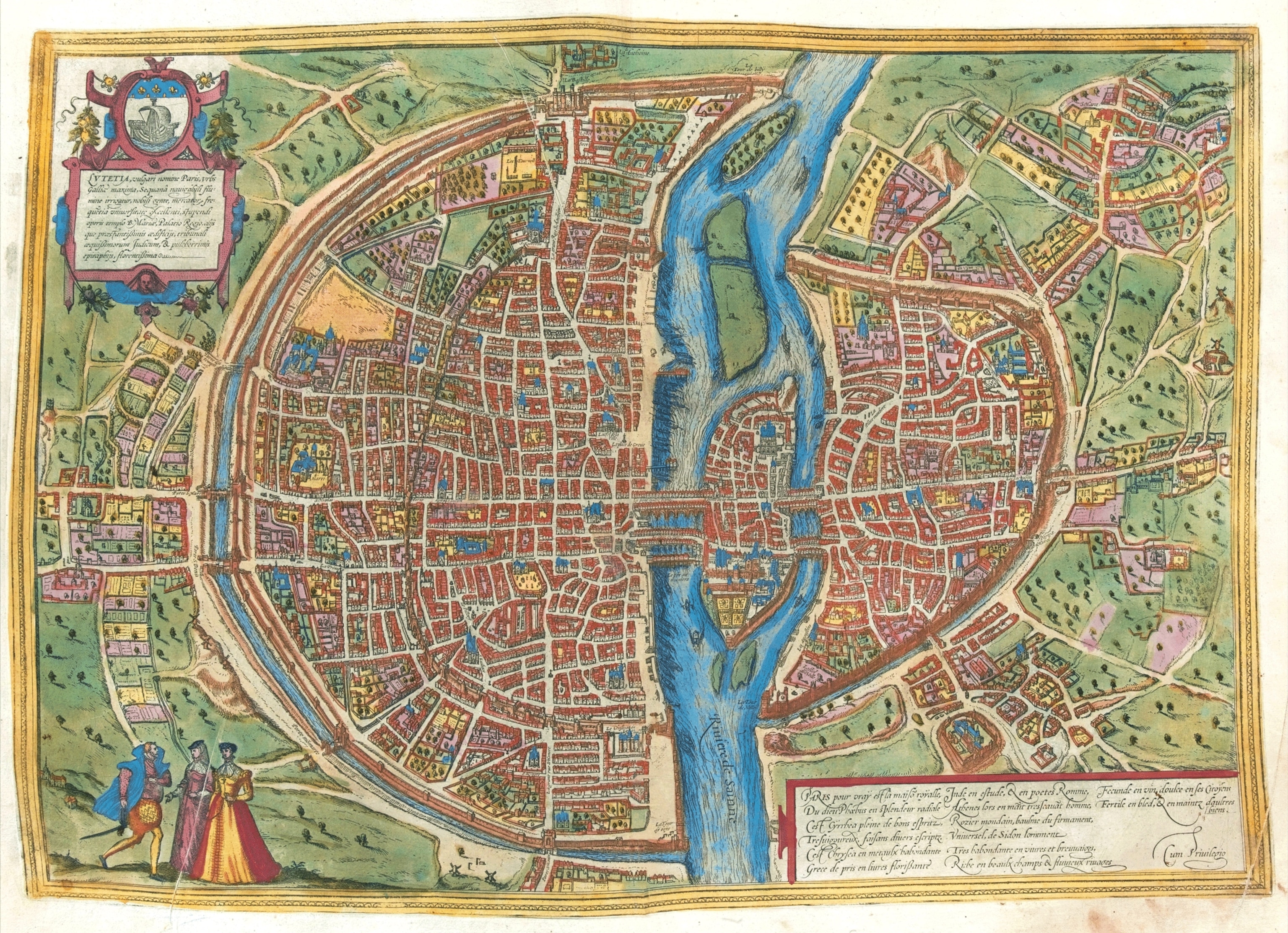
Instead, Notre Dame became an urban icon and the backdrop against which generations of Parisians lived their lives. During the Middle Ages, it played host to the annual Feast of Fools. Perhaps a throwback to earlier pagan rituals, this celebration centered on a raucous ceremony in which a lowly member of society was appointed a mock pope or archbishop and presided over the festivities of the day. (See vintage pictures of the cathedral from Nat Geo's archives.)
Notre Dame also became the landmark around which the intellectual life of France began to develop. In the early 1100s the great philosopher Peter Abelard taught at Paris’s cathedral school, an institution that predated Notre Dame. The new cathedral rose in prominence as the school’s reputation began to flourish, and students flocked to Paris to gain access to the latest philosophical teachings of the 12th and 13th centuries.
Many students arrived in Paris without the resources to pay for their educations, and turned to begging and crime to earn a living. These people were known as goliards. They frequented the bars and bordellos that existed in the shadow of the imposing church. The bishops of Paris eventually agreed to put an end to student excesses. In 1215 Cardinal Robert de Courçon ordered a decree to be read out from the doorway of Notre Dame, setting out various statutes aimed at imposing order in the university community. A magnet for all kinds of gatherings or spectacles, the cathedral was also the scene of trials and executions. In 1314, on an islet beside the apse of Notre Dame, Jacques de Molay, the last Grand Master of the Templars, was burned at the stake.
Ransacking and Revolt
In the 18th century ideas of architectural taste radically shifted. In the middle of the reign of Louis XIV, the venerable cathedral faced a radical and controversial makeover, a “restoration” that later generations would consider caused more damage than centuries of wear and tear. The rood screen, studded with sculptures, was pulled down. The stained glass windows from the 12th and 13th centuries were replaced with clear glass. Only the three rose windows retain much of their original glazing. A pillar of the central doorway was demolished to allow grand processional carriages to pass through.
Notre-Dame's Famous Features
More devastation was to come in 1789. Regarded as a symbol of the power and aggression of church and monarchy, the building was ransacked during the French Revolution. The heads of the 28 statues in the Gallery of Kings on the main doorway were struck from their bodies, the crowd believing them to represent the hated royal lineage of France—in fact, they depicted the ancient kings of Judea and Israel. Also destroyed were the sculptures adorning the doorways, and the reliquaries and bronze statues inside. Lead from the roof was pillaged for bullets. The bronze bells were melted down to make cannon. Only the enormous Emmanuel bell, which hung in the southern tower and weighed some 13 tons, was spared.
During the revolutionary period, the cathedral was de-Christianized, and the firebrand Robespierre dedicated the church to the cult of the Supreme Being. Once the Terror had abated, the cathedral resumed its former role, but it was a shadow of its former splendor. Many of its windows had been shattered and its treasures ripped out or desecrated. Birds flew in and out through the broken panes, nesting high in the galleries and overhangs of what was turning into a giant ruin. Finally, in 1801, the government of Napoleon Bonaparte signed a concord with the Holy See under which the Catholic Church would take back control of Notre Dame. Work began immediately to clean up the building and repair the windows. By 1804 it was in an acceptable enough state for Napoleon to be crowned there as emperor.
Cathedral’s Comeback
Notre Dame was returned to glory in the mid-19th century, owing in no small part to the novelist Victor Hugo. A leading light of French romanticism, Hugo spearheaded the resurgence of interest in the medieval past and Gothic art. Writing in his 1831 blockbuster novel—later published in English as The Hunchback of Notre Dame—Hugo imagines the medieval turmoil of Paris, “mingled, combined, amalgamated in Notre Dame.”

Set in and around the cathedral, the plight of Quasimodo, the cathedral’s hunchbacked bell ringer, and the beautiful gypsy girl Esmeralda, fired the imaginations of Hugo’s French readership. Parisians and the city authorities rallied around the decaying building as a treasure worth restoring. Hugo wrote: “It is difficult not to wax indignant, before the numberless degradations and mutilations which time and men have both caused the venerable monument to suffer.”
A restoration of the cathedral was launched in the 1840s. Architect Eugène Viollet-le-Duc was tapped in 1844 to lead the work. For nearly
25 years, he strove to revive Notre Dame’s strength and beauty. He restored the west facade and the Gallery of Kings, and also added new features: a towering spire, sculptures of the Twelve Apostles, and the now famous gargoyles and chimeras who perch on the stone walls.
In the 19th century the city of Paris itself also began to modernize in ways that would benefit the old cathedral. In the 1850s Napoleon III employed urban planner Baron Haussmann to undertake a massive urban regeneration of Paris, during which many of the city’s old buildings would be cleared to create boulevards and large open squares. On the Île de la Cité, Haussmann had houses and other buildings around the cathedral pulled down in order to open up a new square in front of the main facade. For the first time, Parisians could stand back and contemplate the cathedral in all its grandeur. (Read Nat Geo's 1968 ode to Paris's most famous cathedral.)
Since then, the image of Notre Dame has become inseparable from that of Paris. The building is celebrated in the paintings of Matisse and Picasso, while The Hunchback of Notre Dame has inspired several films. Hugo himself would not have been surprised by the building’s universal appeal, describing Notre Dame as “a central mother church . . . It has the head of one, the limbs of another, the haunches of another, something of all.”


